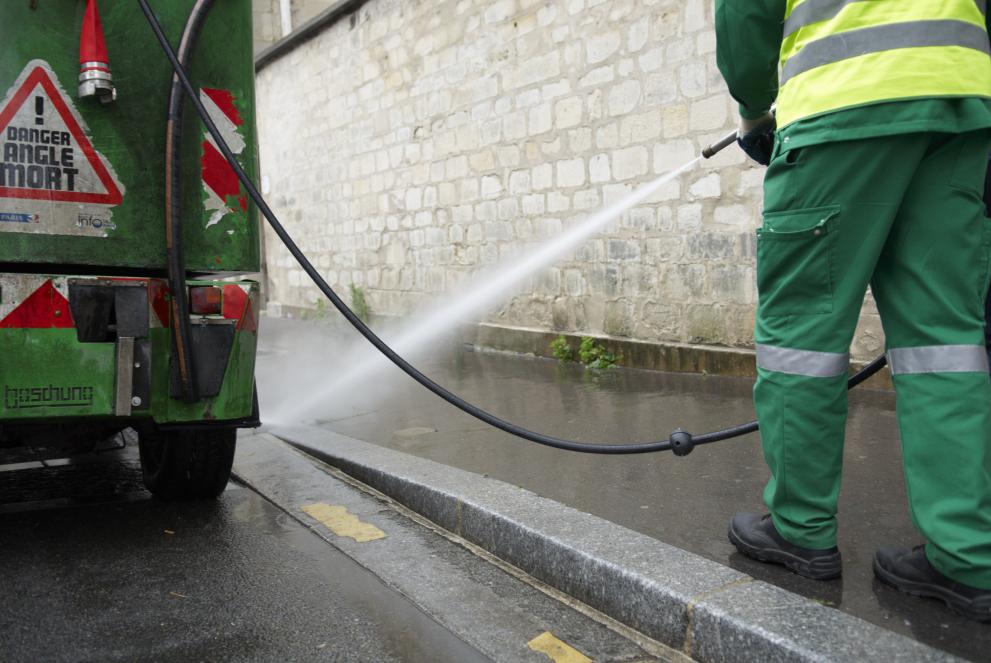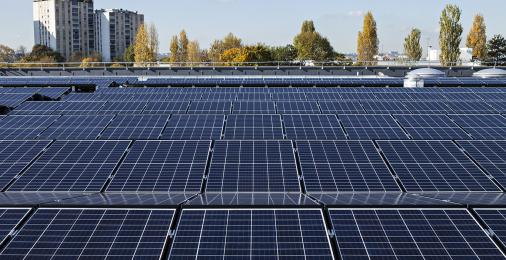Non-potable water, an asset for a sustainable city
Inherited from the XIXe century and on a scale unique in France, the non-drinking water network of Paris is one of the specificities of the capital, yet often unknown to the general public.
Neglected for a long time, the non-drinking water network reveals its potential to face the challenges of climate change and the sustainable city. The field of urban uses of non-potable water extends from maintenance of biodiversity, au refreshment of the City by thewatering of green spaces including energy uses and the recovery of “local” water resources, in particular mine water (infiltration water recovered from underground structures, such as the metro or car parks).

Low in energy and low in carbon because the result of a simple treatment without reagents, non-potable water plays a fundamental role in the greening of Paris, and thus in the cooling of urban space in summer.

Non-potable water, a precious resource for the city of tomorrow
If it cannot be drunk, undrinkable water proves to be a precious resource for making Paris a more resilient and sustainable city of the future.
We are going to need non-potable water to supply parks, gardens and woods, to water the new spaces that we are going to green and generally to cool the city.
The non-potable water network is a network that is 1600 km long. It is the main non-drinking water network in major cities around the world. There is not a big city in the world where we will have a drinking water network as long as in Paris. Here, when we are on the roof of the reservoir at the top of the basins, you can see that the water is just below us, we are roughly between the second and third floors and we are also in Passy, we are on a from the hills of Paris which allows us to have a good altitude so that the water can then descend by gravity to supply all of western Paris.
The drinking water network has several main uses: the first in quantity is used to fluidify the sewers of Paris. It is about 50% of non-drinking water which by what are called cisterns, flushes which are in the sewers and which make it possible to fluidify the sewers of Paris and to avoid the stagnation of materials and the bad odors that this causes.
The second largest use, approximately 30%, is watering parks, gardens and woods as well as supplying the hydrographic networks of the Bois de Vincennes and the Bois de Boulogne.
The third use will be the cleanliness of Paris. We use undrinkable water every morning to clean the sidewalks of Paris. We use this non-potable water which is simply water which is mainly taken from the Ourcq canal and untreated water, simply screened, that is to say that we remove the large debris and then we use it as it is in a completely natural way. The water that you see behind in this basin which is called the Copernic basin, 22000 cubic meters of water, it essentially feeds the network of lakes and rivers in the Bois de Boulogne.
We are lucky to have this network to prepare Paris for climate change and all the new neighborhoods where we are going to plant trees, the neighborhoods that we call "beautify Paris", all the watering will be able to be done with this network of undrinkable water which is going to develop. The city of Paris is going to put 10 million euros in addition to the 26 million euros which are already planned for all the transport pipes and the pipes of the distribution network which will make it possible to water these trees in its new districts. We are going to plant many more trees and including we will obviously keep current uses with the watering of the current Parisian gardens, so 20% of the gardens, and also the Bois de Boulogne which is supplied by this very important network.
The non-potable water network is also used to experiment with new innovative uses. This is how the radiators of the 59 m² and the domestic hot water network of the future eco-neighborhood built on the site of the former Saint-Vincent-de-Paul hospital by 000 will be supplied by a loop. hot water 2026 meters long, which uses heat from non-potable water.
Drinking water, the ally of fire defense
the 1er March 2017, Eau de Paris became the sole provider of external fire protection (DECI) in Paris. Eau de Paris now takes care of the maintenance and control of 11 public fire water points in Paris connected to its drinking water network. The challenge ? Permanently guarantee the availability of water for firefighters in firefighting operations.
In collaboration with the City and the Paris Fire Brigade, Eau de Paris is thus on the front line in the fight against "street pooling", i.e. the illegal opening of fire hydrants and hydrants. .
If the practice seems fun, it is not without consequences: risk of injury, slowdown of intervention teams, waste of drinking water and degradation of public property. To combat this phenomenon, Eau de Paris has equipped its equipment with tamper-evident devices, and devised cooling solutions for Parisians.
In 2021, 35 2-in-1 fountains for drinking and sprinkling were installed on fire hydrants in summer, with the constraint of rapid dismantling by firefighters if necessary.
These wild openings mostly show a reaction to the heat. The populations have a real need to cool off: we have therefore opted to install fountains on certain fire hydrants. Little by little, we are deploying installations also equipped with sprinkler systems.
See also

Water in the city
Learn more
Water in the city
Learn more

More information